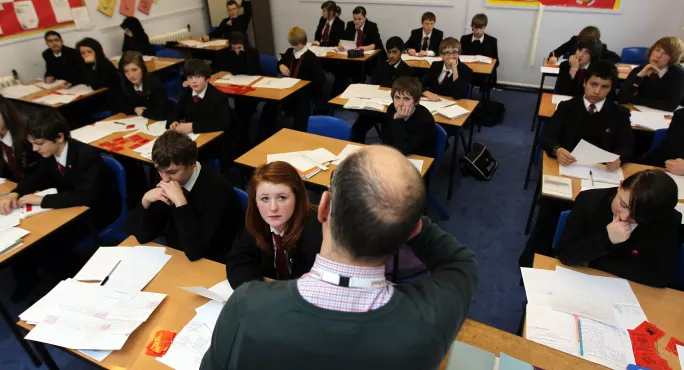- Home
- Pay freezes blamed for huge drop in male teachers
Pay freezes blamed for huge drop in male teachers

The proportion of male teachers in secondary schools in England has fallen continuously over the last decade - and now just over a third of the workforce are men, a report has found.
The decline of male teachers has been fuelled by a significant fall in the proportion of white male teachers in schools, with the number in secondary schools falling by more than 12,800 since 2010 - a decline of 17 per cent, according to an analysis by the Education Policy Institute (EPI) thinktank.
Male teachers: Exploding the myths about male primary teachers
Pay: Male teachers paid more ‘across all grades’
Black Lives Matter: I won’t be put off tackling racism through education
Opinion: ‘Tackling racism in society means more black teachers’
Overall, this means the proportion of men teaching in secondary schools has fallen year-on-year since 2010, hitting its lowest level last year when 35.5 per cent of teachers were male, the analysis shows. But figures in primary schools have stagnated over the last five years to 14.1 per cent.
However, the proportion of black and minority ethnic (BME) male teachers has risen to 17 per cent - which, for the first time, is broadly representative of the wider population at 16 per cent.
Since 2010, the number of BME male teachers has increased in both primary schools (by 114 per cent) and secondary schools (by 34 per cent).
The report - Trends in the Diversity of Teachers in England - says that both trends may have implications for pupil outcomes as there is evidence that pupils have higher learning outcomes when they have “a teacher like me” in the classroom.
North East least popular teaching area
The decline of male teachers has occurred in every region in England, except for Inner London.
Men are least likely to go into teaching in the North East, where across all schools, just one in four (24.4 per cent) teachers are male, according to the report.
It suggests that the decline of men in the profession is likely to be caused by the public sector pay freeze over the last decade because “men’s decision to go into teaching tends to be more responsive to wages than females”.
Males are also more likely to apply to teach at a later round, meaning they are less likely to secure a place, the analysis has found.
The report added that the Covid-19 induced surge in applications for teacher training programmes was unlikely to have a significant impact on gender diversity as applications from both men and women have risen.
The thinktank says that the government is likely to need to recruit more men in shortage subjects, like maths and physics, to meet recruitment targets, given that male graduates outnumber female graduates in physics and maths.
It also says it should continue to offer top-up payments to help recruit and retain maths and physics teachers in the most disadvantaged areas and that it should not be complacent about the surge in teacher numbers as “the Covid-19 boost is only likely to be short term and is unlikely to plug subject-specific shortages”.
Joshua Fullard, author and senior researcher at the EPI, said: “While the Covid-19 recession has boosted teacher applications, this has had no effect on the gender diversity of the school workforce, which is still heavily dominated by women.
“Evidence suggests that when a teacher matches the background of their pupils, this can help to improve pupil outcomes.
“It’s therefore encouraging that despite the overall decline in males, we have seen a rise in the proportion of BME male teachers, which now corresponds with the population as a whole.”
A Department for Education (DfE) spokeswoman said: “We are working to increase the diversity of the teaching workforce, and have improved pathways into the profession with the aim of a diverse workforce that supports the progression and retention of all teachers, regardless of gender.”
She added: “We are increasing teacher pay so that we are one step closer to a £30,000 starting salary for teachers by 2022. We moved closer to that this year by introducing the biggest pay rise since 2005 with above-inflation pay rises to the pay ranges for every single teacher in the country.”
Keep reading for just £1 per month
You've reached your limit of free articles this month. Subscribe for £1 per month for three months and get:
- Unlimited access to all Tes magazine content
- Exclusive subscriber-only stories
- Award-winning email newsletters



